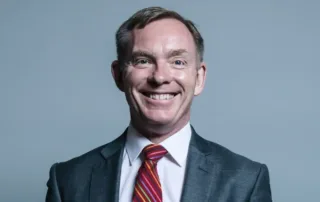
Lisa Nandy and Chris Bryant have been appointed as the Secretary of State and the Minister of State for the Department of Culture, Media and Sport respectively. The Labour Party signalled some firm commitments through their Creative Industries Action Plan, which was launched back in March this year. Like many in the Creative Industry, Outdoor Arts are eagerly waiting to see what first few steps Nandy and Bryant will take.
Outdoor Arts is a fantastic vehicle for bringing the positive impact of Arts and Culture to underserved communities. This is because:
- Outdoor Arts is mostly presented in public spaces where culturally disengaged children and families naturally congregate.
- Outdoor Arts often takes place in a festival context, which is free and non-ticketed, reaching tens of thousands of diverse audiences each weekend. Our audiences do not have to cross a threshold of a theatre or a gallery.
Outdoor Arts is the most cost–effective way of making high-quality creative experiences available to large numbers of people who think that the Arts are not for them. There is also strong evidence of Outdoor Arts making substantial impact on placemaking and the local economy. Some of these are outlined at the end of this blog.
We urge the new Government to acknowledge the transformative power of our sector and enable us to meet their objective of making arts and culture more accessible across the country.
Top 5 immediate asks to the new Government to unleash the power of our sector:
- Make the arts a core subject in education.
- Fix local authority funding.
- Think innovatively about how the arts are resourced.
- Fix our relationship with the EU.
- Support freelance workers.
1. Make the arts a core subject in education.
Many of our festivals have good relationships with local schools, but the de-prioritisation of the arts in formal education has made it increasingly difficult for them to entice new participants to take part in creative projects like parades. The policy change in this area will hugely aid our outreach efforts.
We would also like to work with the Government to encourage more children and their families to experience the Arts by attending our outdoor events. Participation is mostly free and non-ticketed. Our sector can be their first introduction to creativity and the arts, which can be the start of a journey for a career in the Creative Industries.
2. Fix Local Authority funding.
Local Authorities have been the principal funders for many of our festivals. This year, some of the festivals are operating on 60% of the budget they are used to working with, and some have had 100% cuts leading to cancellation of their programme. Resourcing the Local Authorities’ cultural teams sufficiently will boost the sector, but how they get funded needs more careful consideration: many councils have to bid for funding from central government on very short timescales, and this is particularly destabilising for our sector. If our festivals cannot get confirmation of funding from local authorities in good time, they cannot commit to booking artists with sufficient notice period. This is causing talent drain in the Outdoor Arts sector. The majority of our artists and technicians are freelance, so the persistent delays of booking confirmation is forcing some of them to look for alternative work. The haphazard funding timeline is also hindering the growth of our festivals. It prevents them from forming strategic plans.
3. Think innovatively about how the arts are resourced.
Individual artists and smaller festivals are not set up to take advantage of philanthropic giving, corporate sponsorship, loan schemes for cultural organisations, and Theatre Tax Relief etc. Access to these resourcing opportunities need to become more equitable and flexible. Examples:
- Our free-to-access festivals do not always have appropriate business models to take advantage of Social Impact loans. They do not generate cash income that gives them the scope to service repayment plans.
- If the “Creativity Bank” outlined in Creative UK’s Manifesto was actualised, it needs to become a body that gathers resources to redistribute to a wide array of individuals and groups. It cannot be left to just serve the large organisations.
4. Fix our relationship with the EU.
Many Outdoor Arts festivals and arts companies used to benefit hugely from EU Culture programmes such as Creative Europe, Erasmus+, and interreg. These brought in significant level of funds and enabled meaningful collaboration and exchange with Outdoor Arts colleagues in Europe. Interreg in particular, used to bring in hundreds of thousands of pounds of investment for partner organisations across the UK each year. This enabled strategic infrastructure projects and extensive artist exchange programmes for Outdoor Arts. For example, ZEPA was an interreg project, and archive information is available here. The level of loss of funding we have seen since Brexit cannot be replaced through international trade, funding from local / central governments, Arts Council, and British Council.
As well as regaining access to EU funding, cutting back the red tape for the movement of goods and people will be critical in getting the UK Outdoor Arts sector back on terms with European colleagues. Many artists depend on European touring as a key income component. Our creative teams also relied on individuals being able to work on both sides of the Channel pre-Brexit.
OutdoorArtsUK have done an extensive write up on internationalism and Outdoor Arts.


5. Support the freelancers.
Like all other sectors in the arts, most of the artists, producers, and technicians of Outdoor Arts are freelance workers. Having a Freelance Commissioner as recommended in the Creative UK’s Manifesto will therefore help, but better resourcing the Outdoor Arts Sector by acting on the above points will help enable the sector to stabilise opportunities for freelance workers.
Some statistics about the Outdoor Arts sector
Audience numbers for Outdoor Arts festivals are very often BIG:
- In 2023, Freedom Festival attracted 92,000 people.
- In 2023, Out There Festival attracted 60,000 people.
- The 2022 report by Mela Partnership showed that the 17 South Asian member festivals alone collectively reach 500,000 people annually.
Outdoor Arts festivals support Placemaking:
- In 2023, Milton Keynes International Festival reached 56,000 audiences and 1,299 community participants. 99% said they will come to the next festival, 97% said the festival enhanced their pride for Milton Keynes, and 98% felt the festival had enhanced a sense of community in Milton Keynes.
Outdoor Arts festivals reach audiences who are new to the Arts:
- 54% of Mela audience only attend one cultural event per year.
- The 2019 impact report from Stockton International Riverside Festival showed that only 49% of its audiences had attended a cultural event in the last 6 months.
Outdoor Arts festivals have significant economic impact:
- The same above report on Stockton International Riverside Festival estimated that the 2-day event in Stockton generated £954,552 for local businesses.
- The 2023 survey for Inside Out in Dorset showed that the festival made an economic impact of £1 million at previous editions.
– Sho Shibata, OAUK Director
Image Credits: Leicester Mela; Southampton Mela; Insect Circus at Out there Festival; Place des Anges by Gratte Ciel at Milton Keynes International Festival; Les Girafes by Compagnie OFF at Freedom Festival, captured by Tom Aaron; Poupees Geantes by Transe Express at Inside Out Dorset; Répliques by Cie Le Grand Jete; Solomon Hunter at Derby Caribbean Carnival, captured by Adaptive Media.













